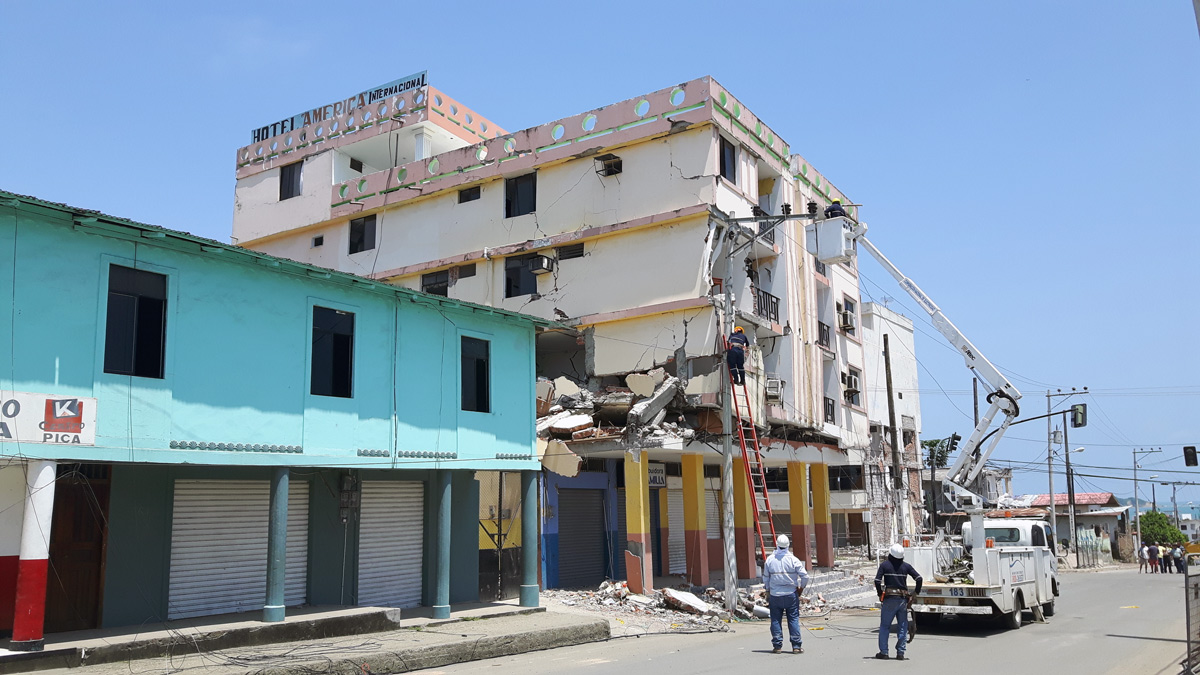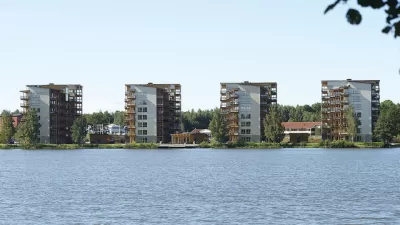The response to Ecuador's 7.8-magnitude earthquake went beyond just physically rebuilding the hardest hit cities

Disasters are never entirely natural; the risks inherent in our environment can be amplified or diminished by any number of factors, from culture to politics and economics.
Similarly, building back effectively after events like hurricanes and earthquakes is never a simple construction exercise. For engineers working in disaster relief, a strong understanding of the local context and an ability to collaborate with a wide range of stakeholders is as important as technical prowess.
For two Arup staff members who traveled to Ecuador in the wake of April’s 7.8-magnitude earthquake, these lessons were abundantly clear. Part of a UK-government-backed team of seismic experts, Anna Pavan from our Madrid office and Francisco Pavia from our Bogotá office spent 10 days assisting the Ecuadorian military’s relief efforts. Most of their work focused on Pedernales, one of the cities hit hardest by the quake.
Image credit: Arup
FULL STORY: Lessons learned in an earthquake's aftermath

Alabama: Trump Terminates Settlements for Black Communities Harmed By Raw Sewage
Trump deemed the landmark civil rights agreement “illegal DEI and environmental justice policy.”

Study: Maui’s Plan to Convert Vacation Rentals to Long-Term Housing Could Cause Nearly $1 Billion Economic Loss
The plan would reduce visitor accommodation by 25% resulting in 1,900 jobs lost.

Why Should We Subsidize Public Transportation?
Many public transit agencies face financial stress due to rising costs, declining fare revenue, and declining subsidies. Transit advocates must provide a strong business case for increasing public transit funding.

Paris Bike Boom Leads to Steep Drop in Air Pollution
The French city’s air quality has improved dramatically in the past 20 years, coinciding with a growth in cycling.

Why Housing Costs More to Build in California Than in Texas
Hard costs like labor and materials combined with ‘soft’ costs such as permitting make building in the San Francisco Bay Area almost three times as costly as in Texas cities.

San Diego County Sees a Rise in Urban Coyotes
San Diego County experiences a rise in urban coyotes, as sightings become prevalent throughout its urban neighbourhoods and surrounding areas.
Urban Design for Planners 1: Software Tools
This six-course series explores essential urban design concepts using open source software and equips planners with the tools they need to participate fully in the urban design process.
Planning for Universal Design
Learn the tools for implementing Universal Design in planning regulations.
Smith Gee Studio
Alamo Area Metropolitan Planning Organization
City of Santa Clarita
Institute for Housing and Urban Development Studies (IHS)
City of Grandview
Harvard GSD Executive Education
Toledo-Lucas County Plan Commissions
Salt Lake City
NYU Wagner Graduate School of Public Service



























